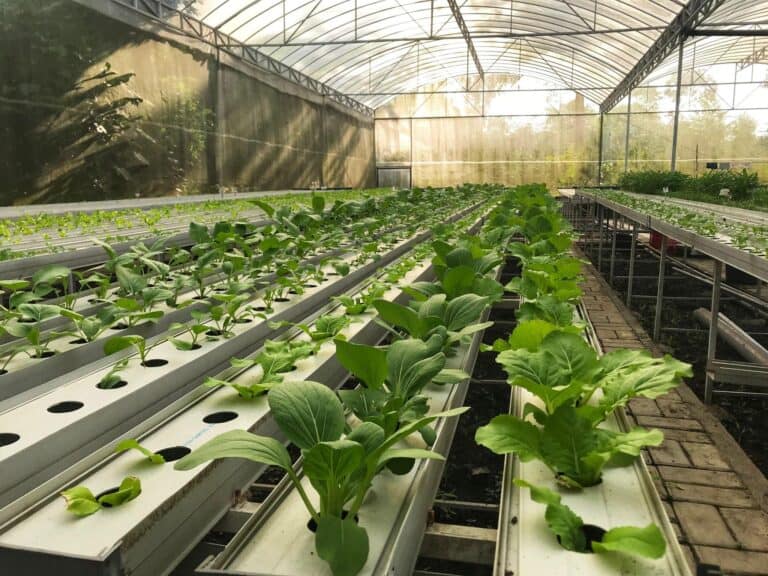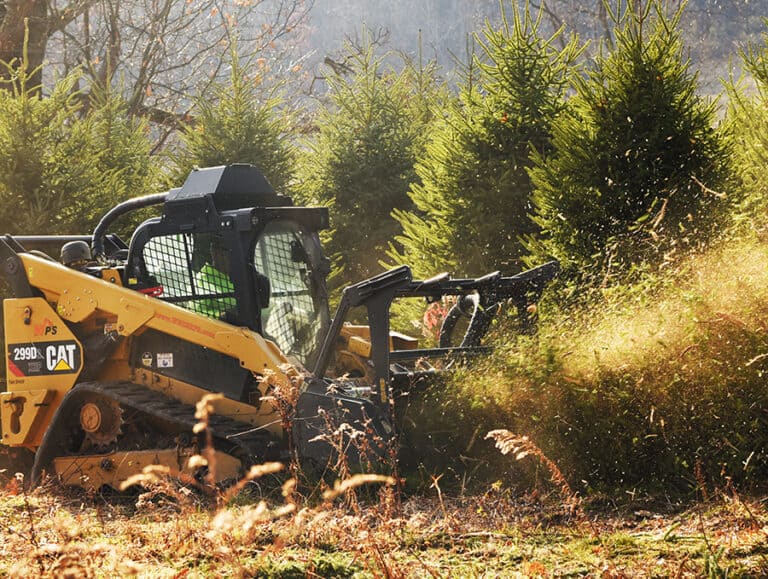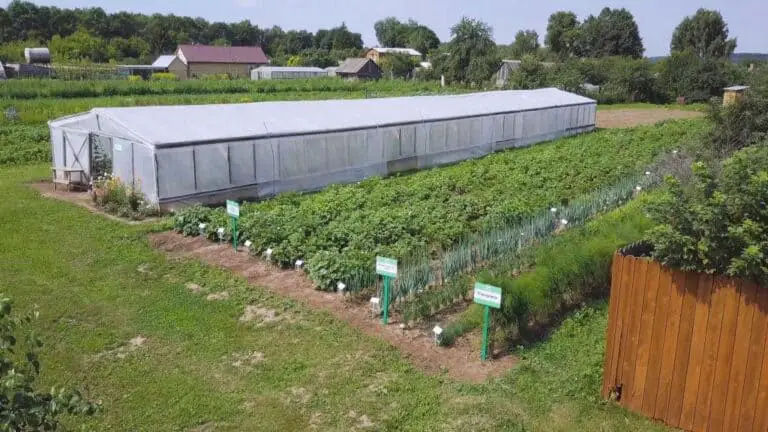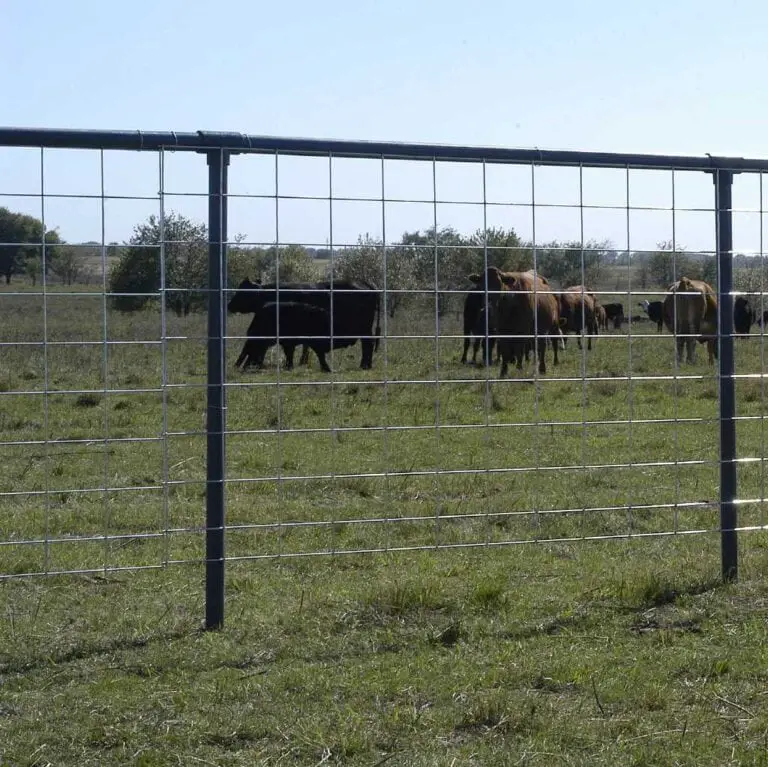Does Greenhouse Need a Ventilation and Cooling System?
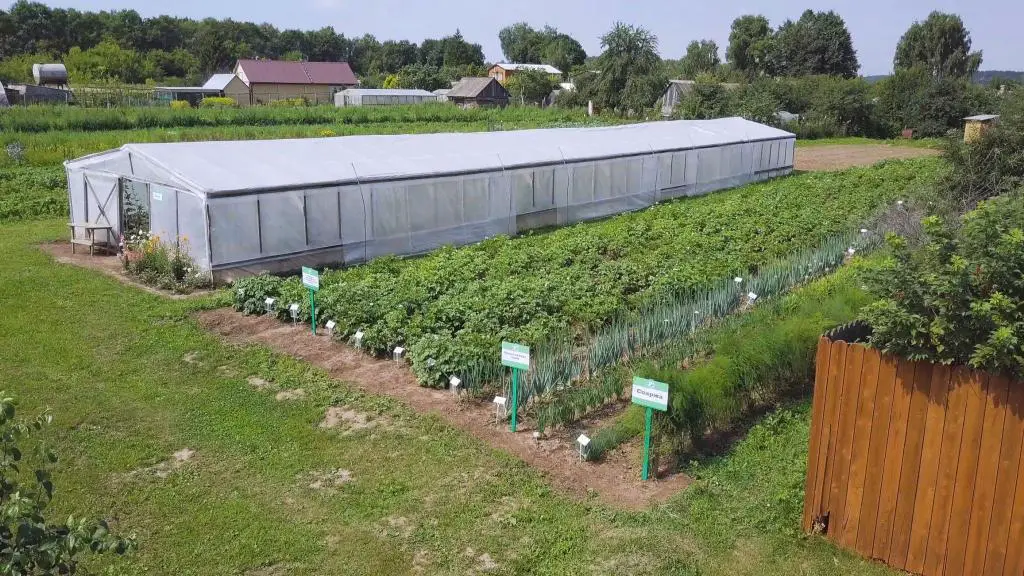
Greenhouses are an ideal environment for growing plants, as they provide a controlled and protected atmosphere that helps plants thrive. However, maintaining the right temperature and humidity levels inside a greenhouse can be a challenge, particularly during the summer months when temperatures can soar.
So, does the greenhouse need a ventilation system? Yes, a well-ventilated greenhouse not only creates a more comfortable environment for you, but it also helps your plants thrive.
Let’s explore the reasons why it is essential for greenhouse owners to install ventilation and cooling systems. We’ll cover everything, from the benefits of proper ventilation to the different types of systems available.
So, whether you’re a seasoned greenhouse owner or just starting out, keep reading to learn why ventilation is essential for a healthy and successful greenhouse.
Why Does a Greenhouse Need a Ventilation System?

A greenhouse is a structure designed to create an optimal environment for plants to grow. It provides a controlled atmosphere that protects plants from the outside weather while allowing them to thrive in a warm and humid environment.
Any greenhouse may get excessively warm without enough ventilation, even in comparatively chilly weather. Believe it or not, high heat within a greenhouse kills more plants than cold. Many plants are very sensitive to heat and will wilt, stop growing, or even die. The greenhouse will maintain a more stable temperature and allow some of this heat to naturally escape by having vents installed throughout.
However, maintaining a stable environment in a greenhouse requires more than just a temperature-controlled system. It also requires proper ventilation. Below are some reasons why a greenhouse need a ventilation system
1. Regulate Temperature and Humidity
A greenhouse is designed to provide a controlled environment for plants to grow. Without proper ventilation, the temperature and humidity levels inside the greenhouse can fluctuate significantly.
During the day, the temperature inside the greenhouse can rise rapidly, particularly in the summer months. This can cause the plants to overheat, which can lead to wilting, yellowing, and even death.
Installing a ventilation system in your greenhouse can help regulate the temperature and humidity levels, ensuring that your plants remain healthy and happy.
2. Prevent Fungal Diseases
Fungal diseases thrive in warm and humid conditions, which can be a breeding ground for harmful fungi inside your greenhouse. Installing a ventilation system can help prevent the buildup of humidity, reducing the risk of fungal diseases that can damage your plants. Proper ventilation can also help prevent the spread of diseases by reducing the level of moisture in the air and increasing air circulation.
3. Improve Air Quality
A greenhouse can quickly become stale and stagnant without proper ventilation. Plants release carbon dioxide (CO2) during the photosynthesis process, which can quickly build up and reduce the amount of oxygen (O2) in the air.
A lack of oxygen can make it difficult for plants to breathe and can lead to wilting and stunted growth. By installing a ventilation system, you can improve the air quality inside your greenhouse, ensuring that your plants have access to the oxygen they need to thrive.
4. Aid Pollination
In the natural world, pollination is always caused by the wind. It’s very important to utilize high-quality fans to replace the lack of wind in your greenhouse. Moving air softly shakes the plants, allowing pollination to take place. With self-pollinating plants like tomatoes, this is extremely crucial.
You should enhance air flow in your greenhouse if you see that your favorite plants are not bearing fruit. The air flow’s moderate pressure on your plants will also foster the growth of stronger stems and root systems, which will enhance the health of your plants as a whole. To improve pollination, you might also want to think about using a hand pollinator like the Vegibee.
Types of Greenhouse Ventilation Systems
1. Natural Ventilation
Natural ventilation is the simplest and most cost-effective way to provide air circulation inside a greenhouse. This system uses vents and louvers to allow air to flow in and out of the greenhouse naturally.
Natural ventilation is particularly effective in small to medium-sized greenhouses, where the volume of air inside is relatively low. However, in larger greenhouses, natural ventilation may not provide sufficient airflow to regulate temperature and humidity levels.
2. Mechanical Ventilation
Mechanical ventilation systems use fans and other mechanical devices to circulate air inside a greenhouse. These systems can be customized to meet the specific needs of your greenhouse, with different types of fans and blowers available to suit different greenhouse sizes and layouts.
Mechanical ventilation systems can also be integrated with heating and cooling systems to provide precise temperature control, making them an excellent choice for year-round growing.
3. Hybrid Ventilation
Hybrid ventilation systems combine both natural and mechanical ventilation systems to provide the best of both worlds. These systems use natural ventilation to provide a basic level of air circulation, but also include mechanical ventilation components to regulate temperature and humidity levels when necessary.
Hybrid ventilation systems are particularly effective in large greenhouses where natural ventilation alone may not be sufficient to maintain the right temperature and humidity levels.
Does Greenhouse Need a Cooling System?
Greenhouses are specifically designed to create a warm and controlled environment that is conducive to plant growth, but this can easily become a hindrance in hot weather conditions. During periods of warm weather, the internal temperature of a greenhouse can become too high and cause heat stress to the plants, which can lead to wilting and even death. This is why a greenhouse cooling system is a crucial component for any greenhouse operation.
The ideal temperature range for most plants in a greenhouse is between 65°F and 80°F. Once the temperature goes beyond this range, plants can become vulnerable to heat stress, which can cause them to stop growing or produce low-quality crops. It is essential to keep the temperature inside the greenhouse within a suitable range for the growth and health of the plants.
One of the most effective ways to cool a greenhouse is through the use of a ventilation system. Ventilation plays a crucial role for greenhouse cooling, as it helps to remove excess heat and humidity while introducing cooler air from outside.
Natural ventilation can be achieved through the use of vents or louvers placed strategically around the greenhouse to allow for the flow of air. For better control of the greenhouse temperature, mechanical ventilation systems can be used. These systems use fans or exhaust systems to extract hot air from the greenhouse while simultaneously bringing in cooler air from outside.
Another cooling system that can be used in a greenhouse is evaporative cooling. This system involves the use of a wet pad or a misting system that sprays water into the air, which cools the surrounding air by evaporating the water. The cooled air is then circulated around the greenhouse through fans or blowers. This system can be particularly effective in hot and dry regions where the humidity is low.
Take note that the cooling system used in a greenhouse will depend on several factors, including the size of the greenhouse, the type of crops being grown, and the local weather conditions. The cooling system should be tailored to meet the specific needs of the plants grown inside the greenhouse.
Factors to Consider When Choosing a Ventilation and Cooling System
There are so many ventilation systems on the market, it can be challenging to know which one to choose. We’ll explore the key factors you need to consider when choosing a ventilation system for your greenhouse.
1. Greenhouse Size and Layout
The size and layout of your greenhouse will play a significant role in determining which type of ventilation system is best for you. Smaller greenhouses may only require natural ventilation, while larger greenhouses may need a more complex mechanical or hybrid ventilation system to maintain the right temperature and humidity levels.
2. Climate and Weather
The climate and weather in your area will also influence which type of ventilation system you choose. For example, if you live in a hot and humid climate, you may need a ventilation system that can provide more cooling and dehumidifying capabilities. On the other hand, if you live in a cooler climate, you may need a system that can provide more heating and humidity.
3. Budget
The cost of a ventilation system can vary significantly depending on the type and size of the system you choose. It’s important to consider your budget when choosing a ventilation system for your greenhouse.
While natural ventilation may be the most cost-effective option, it may not provide enough airflow to maintain the right temperature and humidity levels in larger greenhouses.
In contrast, mechanical and hybrid ventilation systems can be more expensive, but they can provide more precise temperature and humidity control.
4. Energy Efficiency
Another factor to consider when choosing a ventilation system is energy efficiency. Mechanical and hybrid ventilation systems require electricity to operate, which can increase your energy bills. Look for ventilation systems that are designed to be energy-efficient, such as those that use variable speed fans or those that are integrated with energy-saving controls.
Maintenance and Operation of Greenhouse Ventilation and Cooling Systems
Greenhouse ventilation systems are critical to creating the ideal environment for plant growth, but they also require regular maintenance and operation to function effectively. Proper maintenance and operation can help extend the life of the system, prevent breakdowns, and ensure that your plants receive the optimal growing conditions they need.
Regular maintenance is required to maintain your ventilation and cooling system running smoothly. This includes cleaning the system’s components, such as fans, filters, and ducts, to ensure that they are free from dust, debris, and mold. Clogged filters and dirty ducts can reduce airflow and decrease the system’s effectiveness, leading to higher energy consumption and reduced plant growth.
In addition to cleaning, it’s also essential to inspect the system’s components regularly. This can help identify any potential issues before they become major problems. For example, worn belts or loose connections can cause the system to malfunction, reducing its effectiveness and increasing the risk of breakdowns.
Proper operation is also critical to maintaining a healthy growing environment. Greenhouse ventilation systems are designed to work in tandem with other environmental control systems, such as heating and cooling systems, to create a balanced and optimal growing environment. Therefore, it’s crucial to operate these systems in a coordinated manner to achieve the desired results.
Monitoring the greenhouse environment is also essential to ensuring proper system operation. This can include monitoring temperature, humidity levels, CO2 concentrations, and airflow rates. By regularly monitoring these factors, you can make adjustments to the ventilation system to ensure that the environment remains optimal for plant growth.
Finally, it’s essential to follow the manufacturer’s recommendations for maintenance and operation. This can include instructions on how often to clean and inspect the system, as well as how to troubleshoot any potential issues. By following these guidelines, you can ensure that your greenhouse ventilation system operates effectively and efficiently.
Conclusion
In conclusion, a greenhouse does need a ventilation system. Proper ventilation is required for regulating temperature and humidity levels, preventing fungal diseases, and improving air quality. There are several types of ventilation systems available, including natural, mechanical, and hybrid ventilation systems. When choosing a ventilation system, it’s important to consider factors such as greenhouse size and layout, climate and weather, budget, and energy efficiency. By choosing the right ventilation system, you can create a healthy and thriving environment for your plants to grow and flourish.

